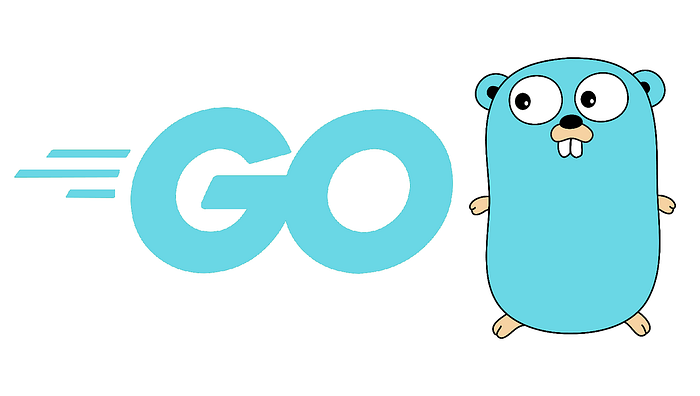Connecting a Go Application to MongoDB
This tutorial will guide you through the process of establishing a connection between your Go (Golang) application and a MongoDB cluster. You’ll also learn how to test the connection by pinging the cluster. If you’re new to Go development, you’re in the right place.

Before you start, make sure you have a MongoDB Atlas account. MongoDB Atlas is a cloud version of MongoDB, and you’ll use it to connect your Go application. This tutorial will also address potential issues you might encounter during the connection setup.
Workspace Setup
First, create a directory for your code. Execute the following commands:
cd Desktop
mkdir MongoConnection
cd MongoConnection
code .
The “code .” command opens your preferred IDE, such as Visual Studio Code, with the newly created directory. In this directory, create a file named “main.go” and open a terminal within your IDE for easy initialization.
Adding Dependencies
Before proceeding, you need to initialize your project with Go modules and add the necessary dependencies, including the MongoDB driver. Run the following commands:
go mod init github.com/golangcompany/MongoConnection
go mod tidy
go get go.mongodb.org/mongo-driver/mongoThese commands set up your project’s dependencies, including the required MongoDB driver.
Role of MongoDB Atlas
In this section, you’ll learn how MongoDB Atlas plays a role in connecting your Go application to MongoDB and how to obtain the connection string.
- Create an account on MongoDB Atlas.
- Once you’ve set up your account, navigate to the “Database” section and click on “Connect.”
- Choose the option to connect with your application.
- Select the appropriate language and version. This will provide you with the correct connection string (URI) to integrate into your code.
Writing the Code
In this section, you’ll write the code to establish the connection between your Go application and MongoDB.
package main
import (
"context"
"fmt"
"log"
"time"
"go.mongodb.org/mongo-driver/mongo"
"go.mongodb.org/mongo-driver/mongo/options"
)
func main() {
// Replace <Username> and <Password> with your MongoDB cluster credentials
uri := "mongodb+srv://<Username>:<Password>@cluster0.0aeeqhe.mongodb.net/?retryWrites=true&w=majority"
client, err := mongo.NewClient(options.Client().ApplyURI(uri))
if err != nil {
log.Fatal(err)
}
ctx, cancel := context.WithTimeout(context.Background(), 10*time.Second)
defer cancel()
err = client.Connect(ctx)
if err != nil {
log.Fatal(err)
}
err = client.Ping(context.TODO(), nil)
if err != nil {
log.Println("Failed to connect to MongoDB")
fmt.Println(err)
}
if err == nil {
fmt.Println("Successfully connected to MongoDB")
}
}Running the Code
To run the code, use the following command in your terminal:
go run main.goYou should see the message “Successfully connected to MongoDB” if the connection is established successfully.
Additional Examples
Let’s explore some additional examples of how to interact with MongoDB using Go:
Inserting Data:
collection := client.Database("mydb").Collection("mycollection")
data := bson.D{{"name", "John"}, {"age", 30}}
_, err := collection.InsertOne(ctx, data)
if err != nil {
log.Fatal(err)
}
fmt.Println("Data inserted successfully")Querying Data:
var result bson.M
filter := bson.D{{"name", "John"}}
err := collection.FindOne(ctx, filter).Decode(&result)
if err != nil {
log.Fatal(err)
}
fmt.Println("Query Result:", result)Advantages of Using MongoDB with Go
- Flexible Schema: MongoDB’s document-based nature allows you to store varying data structures in the same collection, which aligns well with Go’s dynamic types.
- Performance: MongoDB’s efficient querying capabilities and indexing options lead to fast read and write operations, ideal for high-performance applications.
- JSON-Like Documents: Both MongoDB’s documents and Go’s data structures are JSON-like, making data manipulation seamless and reducing the need for complex data mapping.
- Scalability: MongoDB’s horizontal scaling capabilities (sharding) align well with Go’s concurrency and parallelism features, enabling the development of highly scalable applications.
- Community Support: Both the MongoDB driver for Go and the Go programming language itself have active and supportive communities, providing ample resources and assistance.
- Aggregation Framework: MongoDB’s powerful aggregation framework allows you to perform complex data analysis and transformation directly in the database.
Conclusion
In this tutorial, you’ve learned how to connect your Go application to a MongoDB cluster using MongoDB Atlas. We covered the entire process, from setting up the workspace and adding dependencies to writing the connection code and executing it. I also explored additional examples of inserting and querying data from MongoDB using Go. MongoDB’s flexible schema, performance, and scalability, combined with Go’s concurrency and community support, make this combination a powerful choice for building modern applications. As you continue your journey with Go and MongoDB, you’ll find endless possibilities for developing robust and efficient applications.
